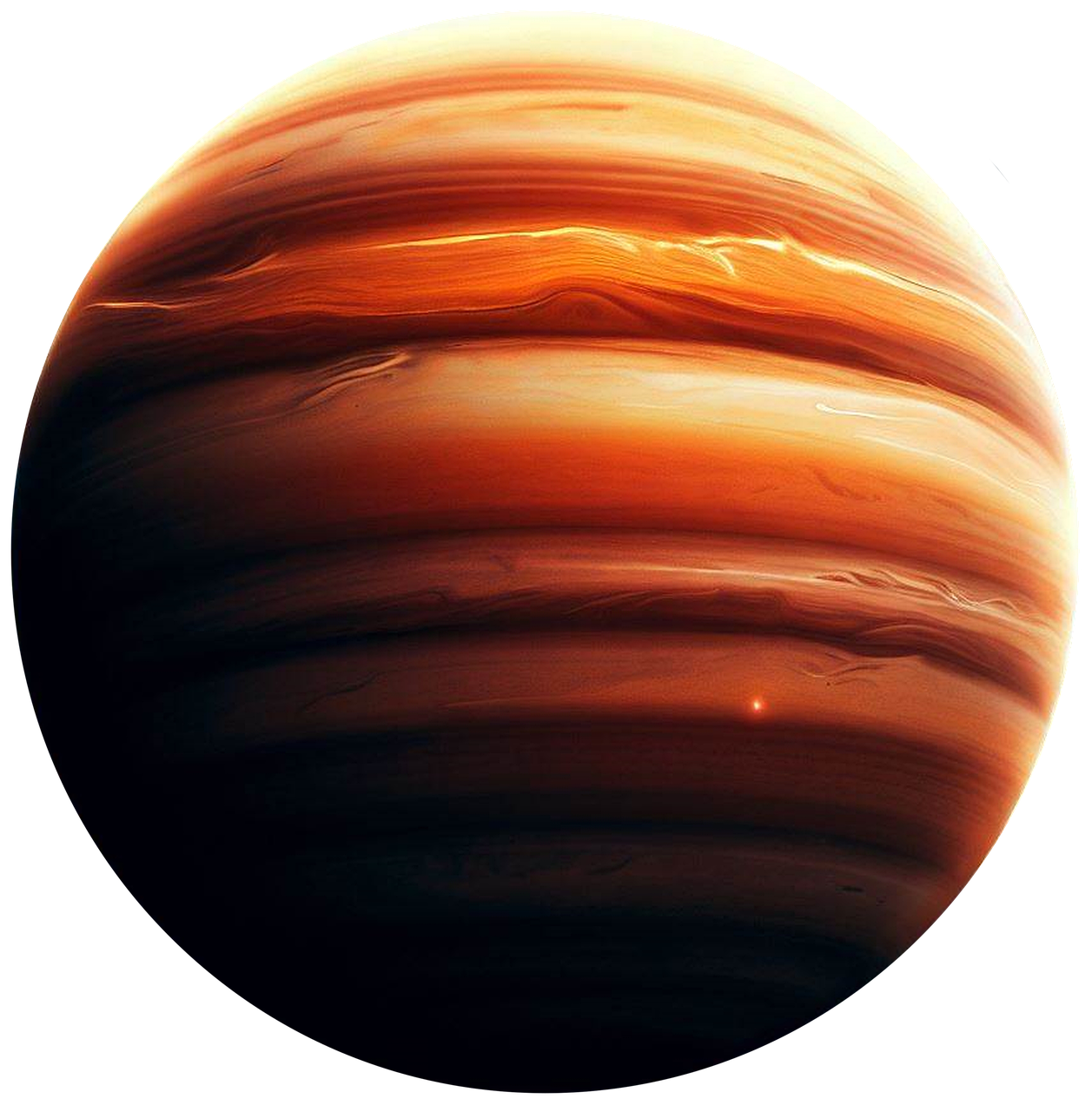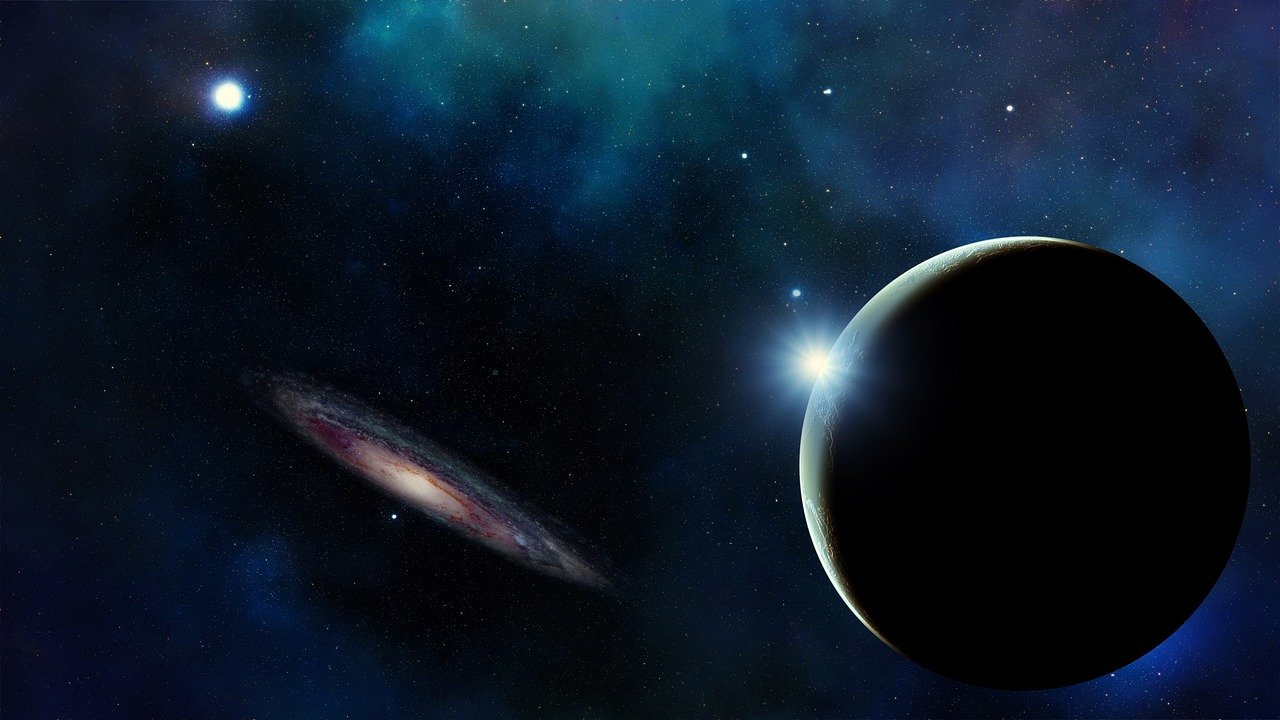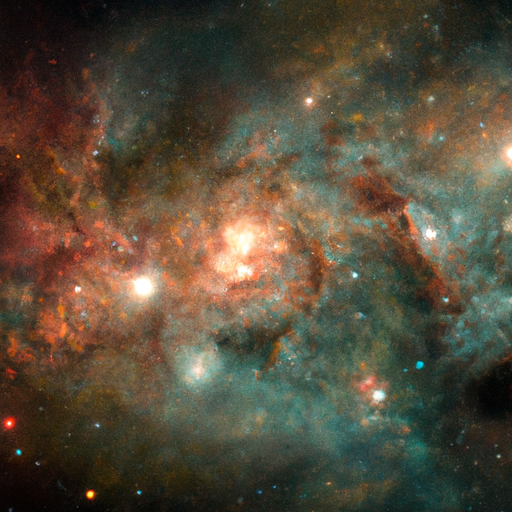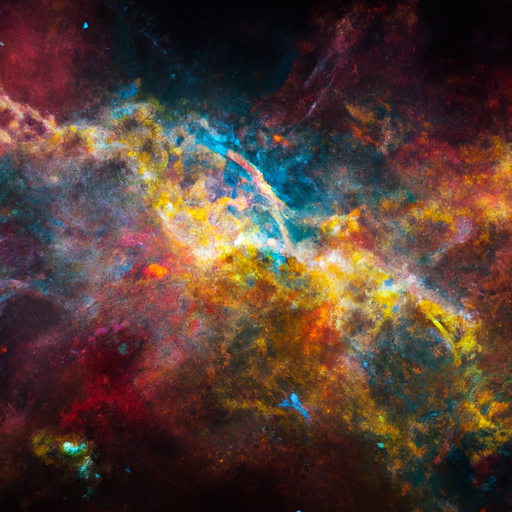Are you curious about how the universe came into existence? In “The Fundamentals of Cosmology: Exploring the Origins of the Universe,” we will take you on a captivating journey through the mysteries of the cosmos. Join us as we unravel the secrets behind the birth of the universe, from the Big Bang to the formation of galaxies and beyond. Through an engaging exploration of astrophysics and astronomy, this article will provide you with a comprehensive understanding of the fundamental principles that govern our vast and enchanting universe. So, buckle up and get ready to embark on a mind-boggling adventure into the origins of everything we see around us.

1. The Big Bang Theory
1.1 Overview
The Big Bang Theory is the prevailing cosmological model for the origin of the universe. According to this theory, the universe began as an extremely hot and dense state approximately 13.8 billion years ago. It expanded rapidly, cooled down, and gave rise to the universe as we know it today. The theory suggests that the universe is still expanding, and the discoveries made in cosmology over the past century support this idea.
1.2 Historical Context
The Big Bang Theory was first proposed by the Belgian physicist Georges Lemaitre in the 1920s. At that time, astronomers observed that galaxies were moving away from each other, suggesting an expanding universe. However, it was not until the 1940s that the term “Big Bang” was coined by the English astronomer Fred Hoyle, who initially dismissed the theory and favored an alternative explanation called the steady-state model. Over time, the observational evidence overwhelmingly supported the Big Bang Theory, leading it to become widely accepted.
1.3 Key Concepts
The Big Bang Theory is based on several key concepts. One of the most fundamental concepts is the idea that the universe is expanding. This expansion is supported by observations such as the redshift of distant galaxies, which indicates that they are moving away from us. The theory also incorporates the concept of cosmic inflation, a rapid expansion of the universe in its early stages. Another key concept is the existence of dark matter and dark energy, which are believed to make up the majority of the universe’s mass and energy but cannot be directly observed. These concepts help explain many observations and phenomena in the universe.
2. Expansion of the Universe
2.1 Hubble’s Law
Hubble’s Law, formulated by the American astronomer Edwin Hubble in the late 1920s, provides empirical evidence for the expansion of the universe. The law states that the velocity at which galaxies are receding from us is proportional to their distance from us. In other words, the farther a galaxy is from us, the faster it appears to be moving away. This relationship, known as the Hubble constant, has been refined over the years, leading to a more precise understanding of the rate at which the universe is expanding.
2.2 Evidence of Expansion
In addition to Hubble’s Law, there are several other pieces of evidence that support the expansion of the universe. One such evidence is the observed redshift of distant galaxies. As light travels through space, its wavelength is stretched due to the expansion of the universe, causing a shift toward the red end of the electromagnetic spectrum. This redshift can be observed in the spectra of distant galaxies, confirming that they are moving away from us. Another piece of evidence is the distribution of galaxies in the universe, which appears to be homogeneous on large scales. This suggests that the universe has been expanding uniformly.
2.3 Dark Energy
Dark energy is a mysterious form of energy that is believed to be responsible for the accelerated expansion of the universe. It is thought to make up about 68% of the total energy in the universe. The existence of dark energy was first inferred from observations of distant supernovae in the late 1990s. These supernovae appeared fainter than expected, indicating that they were farther away than previously thought. This led to the conclusion that the expansion of the universe is not slowing down due to gravity, but rather accelerating due to the repulsive effect of dark energy. The nature of dark energy is still not well understood, and its discovery remains one of the biggest mysteries in cosmology.

3. Cosmic Microwave Background Radiation
3.1 Discovery and Significance
The cosmic microwave background (CMB) radiation is residual radiation from the early stages of the universe, often referred to as the “afterglow” of the Big Bang. It was first discovered accidentally in 1965 by Arno Penzias and Robert Wilson, who were conducting radio astronomy experiments. The discovery of the CMB radiation provided strong support for the Big Bang Theory, as it confirmed the prediction that the universe originated from a hot, dense state. This radiation is an important source of information about the early universe and has played a crucial role in our understanding of cosmology.
3.2 Measurements
Measurements of the cosmic microwave background radiation have revealed important insights into the structure and composition of the universe. Scientists have carried out precise measurements of the temperature and polarization of the CMB radiation. The temperature measurements have helped determine the age of the universe and the ratio of ordinary matter to dark matter. The CMB polarization measurements have provided valuable information about the early universe, such as the existence of cosmic inflation and the density fluctuations that would eventually give rise to the formation of galaxies and other large-scale structures.
3.3 Implications
The discovery and study of the cosmic microwave background radiation have had significant implications for our understanding of the universe. The measurements of the CMB radiation have confirmed several predictions of the Big Bang Theory and provided strong evidence for the existence of a rapid expansion phase known as inflation. They have also helped constrain the amount of dark matter and dark energy in the universe. The CMB radiation continues to be an important tool for cosmologists, as further observations and analysis of this radiation can reveal more about the origins and evolution of the universe.
4. Formation and Evolution of Galaxies
4.1 Galaxy Formation Theories
The formation and evolution of galaxies is a complex process that is the subject of ongoing research and study in cosmology. Various theories have been proposed to explain how galaxies, including our own Milky Way, formed and evolved over time. One widely accepted theory is the hierarchical model, which suggests that galaxies formed through the gravitational collapse of small, dense regions of dark matter, followed by the accretion of gas and the subsequent formation of stars. This model is consistent with observations of galaxies at different stages of their evolution.
4.2 Shape and Distribution of Galaxies
Galaxies come in different shapes and sizes, ranging from spiral galaxies with distinct arms to elliptical galaxies with a more rounded appearance. The shape and distribution of galaxies in the universe provide valuable information about the underlying physical processes that govern their formation and evolution. The cosmic web, a large-scale structure composed of filaments of galaxies interconnected by vast voids, suggests that galaxies are not randomly distributed but instead follow a pattern dictated by the gravitational forces acting on them.
4.3 Role of Dark Matter
Dark matter plays a crucial role in the formation and evolution of galaxies. It is believed to provide the gravitational scaffolding that allows ordinary matter to clump together and form galaxies. The distribution of dark matter, inferred from its gravitational effects on visible matter, is thought to determine the large-scale structure of the universe. Without the presence of dark matter, galaxies would not have formed as we observe them today. Understanding the nature and properties of dark matter is therefore essential for a comprehensive understanding of galaxy formation and evolution.

5. Dark Matter and Dark Energy
5.1 Nature of Dark Matter
Dark matter is a form of matter that does not interact with light or other forms of electromagnetic radiation, making it invisible to traditional detection methods. Its exact nature remains unknown, but theories suggest that it consists of as-yet-undiscovered particles that do not interact through the electromagnetic force, only through gravity and possibly other weak forces. Dark matter is thought to make up about 27% of the total mass-energy content of the universe.
5.2 Evidence for Dark Matter
There is ample evidence for the existence of dark matter, even though it cannot be directly observed. One piece of evidence comes from the motion of stars and galaxies within galaxy clusters. The observed velocities suggest that there must be more mass present than can be accounted for by visible matter alone, implying the presence of dark matter. Other evidence comes from the measurement of the rotation curves of spiral galaxies, which do not match the expected behavior based on visible matter alone. These and other observations strongly support the existence of dark matter.
5.3 Dark Energy and Its Influence
Dark energy is a form of energy that is thought to permeate all of space and is responsible for the accelerated expansion of the universe. Its exact nature is not yet understood, but it is believed to be associated with empty space itself. Dark energy is thought to be the dominant component of the universe, accounting for approximately 68% of its total energy. Its influence on the expansion of the universe has been observed through various cosmological measurements and has significant implications for the future evolution of the universe.
6. Inflationary Cosmology
6.1 Inflationary Period
Inflationary cosmology proposes that the universe went through an extremely rapid expansion phase in its early moments. This period, known as cosmic inflation, is believed to have occurred less than a fraction of a second after the Big Bang. During this phase, the universe expanded exponentially, stretching out tiny quantum fluctuations to macroscopic scales and leading to the density fluctuations responsible for the formation of galaxies and other large-scale structures.
6.2 Supporting Evidence
Several lines of evidence support the idea of inflationary cosmology. One piece of evidence is the observation of the cosmic microwave background radiation, which exhibits a remarkable level of uniformity across the sky. Inflation predicts this uniformity, as the regions that eventually became opposite ends of the observable universe were in causal contact during the inflationary period. Other supporting evidence comes from measurements of the large-scale structure of the universe, which show structures consistent with the predictions of inflation.
6.3 Implications for Large-Scale Structures
The theory of inflation has important implications for understanding the formation of large-scale structures in the universe. It provides an explanation for the observed uniformity of the cosmic microwave background radiation and the distribution of galaxies on large scales. Inflation also predicts the presence of a spectrum of density fluctuations, which can be tested against observations. Understanding the mechanisms and consequences of inflation is key to unraveling the mysteries of the early universe and its subsequent evolution.

7. The Multiverse Hypothesis
7.1 Concept of the Multiverse
The concept of the multiverse suggests that our universe is just one of many universes that exist. It proposes the existence of a vast and diverse collection of universes, each with its own physical properties and laws of physics. The multiverse hypothesis has emerged as a possible solution to several unanswered questions in cosmology, such as the fine-tuning of the fundamental constants of nature and the origin of the laws of physics themselves.
7.2 Types of Multiverses
There are several different types of multiverses that have been proposed by physicists and cosmologists. One type is the bubble multiverse, which suggests that our universe is just one of many bubbles that have formed within a larger cosmic landscape. Each bubble represents a separate universe with its own set of physical laws. Another type is the parallel universes multiverse, which proposes that there are infinitely many universes that exist in parallel with our own, each occupying its own separate spacetime.
7.3 Testing the Multiverse Theory
Testing the multiverse theory is a challenging task, as it involves phenomena and universes that are beyond our direct observation. However, scientists are exploring indirect methods to test and support the multiverse hypothesis. For example, the detection of cosmic inflation and its predictions about the large-scale structure of the universe can provide evidence for the existence of other universes. Other approaches involve searching for patterns or signatures in the cosmic microwave background radiation that could indicate the presence of other universes. The study of the multiverse remains an active area of research in cosmology.
8. The Search for Origins: Particle Physics
8.1 Particle Accelerators
Particle accelerators play a crucial role in the study of the fundamental particles and forces that make up the universe. These powerful machines accelerate particles to high speeds and energies, allowing scientists to replicate the conditions of the early universe and probe the fundamental structure of matter. Particle accelerators have been instrumental in the discovery of new particles, such as the Higgs boson, and have provided valuable insights into the fundamental forces that govern the universe.
8.2 Particle Interactions
Particle interactions are the processes through which particles interact with each other, exchanging energy and information. The study of particle interactions helps us understand the fundamental forces that govern the behavior of matter at a microscopic level. Quantum field theory provides a mathematical framework for describing these interactions, combining the principles of quantum mechanics and special relativity. Understanding particle interactions is crucial for unraveling the mysteries of the early universe and the fundamental nature of reality.
8.3 Role of Quantum Field Theory
Quantum field theory is a mathematical framework that describes the behavior of elementary particles and their interactions. It combines the principles of quantum mechanics, which describes the behavior of particles at a microscopic level, with special relativity, which describes the behavior of particles moving at high speeds. Quantum field theory has been successful in explaining many phenomena in particle physics and has played a crucial role in the development of the Standard Model, which is our current understanding of the fundamental particles and forces in the universe. It continues to be a powerful tool for investigating the origins and nature of the universe.

9. Cosmological Models: Inflation vs. Steady-State
9.1 Comparison of Inflation and Steady-State Models
Inflation and the steady-state model are two competing cosmological models that have been proposed to explain the origins and evolution of the universe. Inflation proposes a rapid expansion of the universe in its early moments, while the steady-state model suggests that the universe has always existed in its present state, with new matter continually being created to replace that which is lost due to the expansion. These models have different implications for the large-scale structure of the universe and the patterns observed in the cosmic microwave background radiation.
9.2 Supporting Evidence and Observations
Observations and measurements have provided evidence that supports the inflationary model and challenges the steady-state model. The uniformity and isotropy of the cosmic microwave background radiation, as well as the observed large-scale structure of the universe, are consistent with the predictions of inflation. On the other hand, the steady-state model struggles to explain these observations and relies on the continuous creation of matter, which has not been supported by experimental data. The accumulated evidence points towards inflation as the more likely scenario for the early universe.
9.3 Current Consensus and Future Investigations
The current scientific consensus strongly favors the inflationary model as the correct description of the early universe. The model has successfully explained many observations and provides a coherent framework for understanding the origins and evolution of the universe. However, ongoing research and future investigations are aimed at further testing and refining the inflationary model, as well as exploring alternative scenarios and addressing remaining questions. Continued advancements in observational techniques and theoretical understanding will ensure that our knowledge of the universe’s origins continues to expand.
10. Astronomy and Cosmology Today
10.1 Advancements in Observational Techniques
Advancements in observational techniques have revolutionized the field of astronomy and cosmology in recent decades. Ground-based telescopes, space-based observatories, and large-scale surveys have provided unprecedented views of the universe and enabled scientists to study celestial objects and phenomena in greater detail. Instruments such as the Hubble Space Telescope, the Planck satellite, and the upcoming James Webb Space Telescope have significantly advanced our understanding of the universe and continue to make groundbreaking discoveries.
10.2 Recent Discoveries and Breakthroughs
In recent years, there have been several significant discoveries and breakthroughs in the fields of astronomy and cosmology. For example, the detection of gravitational waves in 2015 confirmed a key prediction of Einstein’s theory of general relativity and opened up a new window for observing the universe. The discovery of exoplanets, or planets outside our solar system, has also expanded our knowledge of planetary systems and the potential for extraterrestrial life. Advances in the study of supernovae, black holes, and the dynamics of galaxies have provided further insights into the workings of the universe.
10.3 Unsolved Mysteries and Future Directions
Despite the progress made in cosmology, there are still many unsolved mysteries and unanswered questions about the universe. For instance, the nature of dark matter and dark energy remains unknown, and their precise roles in the universe are still a subject of intense study. The search for the ultimate theory of everything, which would unify the fundamental forces of nature, also continues to be a major goal in theoretical physics. Future directions in cosmology involve further exploration of the early universe, precise measurements of the cosmic microwave background radiation, and the study of dark matter and dark energy. Continued advancements in technology and scientific understanding will undoubtedly shed more light on these mysteries and shape our understanding of the universe.